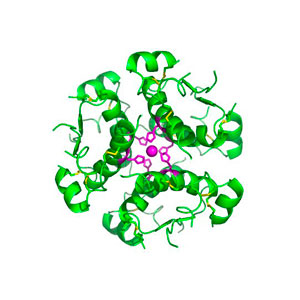Salivary cotinine shows personalized outreach improves participation in smoking cessation services
March 30, 2017Effectiveness of personalised risk information and taster sessions to increase the uptake of smoking cessation services (Start2quit): a randomised controlled trial. Author: Gilbert H, et al (2017), The Lancet BACKGROUND: National Health Service Stop Smoking Services (SSSs) offer help to smokers motivated to quit; however, attendance rates are low and recent figures show a downward […]
Salivary DNA analysis shows exercise reduces genetic risk for depression and suicidal ideation
March 23, 2017A genetic risk factor for major depression and suicidal ideation is mitigated by physical activity Author: Taylor MK, et al. (2017), Psychiatry Research We evaluated associations of five candidate polymorphisms (Bcl1 [rs41423247], -2C/G [rs2070951], COMT [rs737865], Val66Met [rs6265], and 5HTTLPR [biallelic and triallelic [5HTTLPR/rs25531]) with probable MDD and suicidal ideation (SI), the effects of physical […]
Evidence supports studying cortisol and DHEA in concert
March 8, 2017Cortisol and DHEA in development and psychopathology Author: Karmin HS, et al (2017), Hormones and Behavior Dehydroepiandrosterone (DHEA) and cortisol are the most abundant hormones of the human fetal and adult adrenals released as end products of a tightly coordinated endocrine response to stress. Together, they mediate short- and long-term stress responses and enable physiological […]
Insulin from Saliva: Salimetrics Launches New Testing Protocol to Supplement Modern Obesity Research
February 23, 2017(February 23, 2016) With salivary insulin testing from Salimetrics' SalivaLab, investigators studying diseases associated with adult and childhood obesity such as type II diabetes mellitus, heart disease, metabolic syndrome, and the biological pathways of insulin now have an easy way to get important biological data from more participants. Today, researchers can fast-track sample collection and [...]
Meet daacro, a unique European Salivary Bioscience Consultancy & CRO
February 16, 2017Meetings are always a good option to meet and exchange. During the next months, you will find daacro at the following meetings and we would enjoy meeting you at one of these occasions. Let us know if you wish to organize your individual meeting with daacro at: March 02 – 03, 2017 2nd OTC Toolbox […]
Salivary uric acid associated with BMI, gender, and developmental differences
February 14, 2017Association between body mass index and salivary uric acid among Mexican-origin infants, youth and adults: Gender and developmental differences. Author: Martínez AD, et al (2016), Dev Psychobiol. Uric acid (UA) is the end product of the metabolic breakdown of purine nucleotides. Recent studies have measured UA in saliva in relation to obesity and chronic disease […]
Couples low in dyadic coping display increased immune reactivity in response to stress
February 2, 2017Dyadic Coping and Salivary Interleukin-6 Responses to Interpersonal Stress Author: Reed RG, et al (2016), Journal of Family Psychology. Dysregulated immune responses to stress are a potential pathway linking close relationship processes to health, and couples’ abilities to cope with stress together (dyadic coping) likely impact such immune responses. Most stress research has focused on […]
Salivary Diagnostics from Salimetrics Support daacro, a German CRO, in neuropattern™ Customization
January 26, 2017(January 26, 2017) daacro received further EU-funding to participate in the Eurostars-project named “ActiveNutraLife – A new complementary medicine approach for the management of chemotherapy side effects,” from November 2016 until October 2019. This project aims at designing and testing in clinical studies a new complementary medicine approach to speed up the recovery of haematological [...]
Call for Papers: Psychosomatic Medicine Special Issue
January 20, 2017The Neuroscience of Pain: Biobehavioral, Developmental, and Psychosocial Mechanisms and Targets for Intervention Guest Editors: Lauren Atlas, PhD, and Mustafa al’Absi, PhD The central nervous system plays a critical role in the association between psychological factors and pain. The neural circuits that are involved in these bi-directional relationships include several systems that influence peripheral processes […]
Individual responses to psychosocial stress are influenced by a neural mechanism
January 13, 2017Prefrontal Cortex Activity Is Associated with Biobehavioral Components of the Stress Response Author: Wheelock MD, et al (2016), Frontiers in Human Neuroscience. Contemporary theory suggests that prefrontal cortex (PFC) function is associated with individual variability in the psychobiology of the stress response. Advancing our understanding of this complex biobehavioral pathway has potential to provide insight […]
 Contact: Salimetrics (USA)
Contact: Salimetrics (USA)



